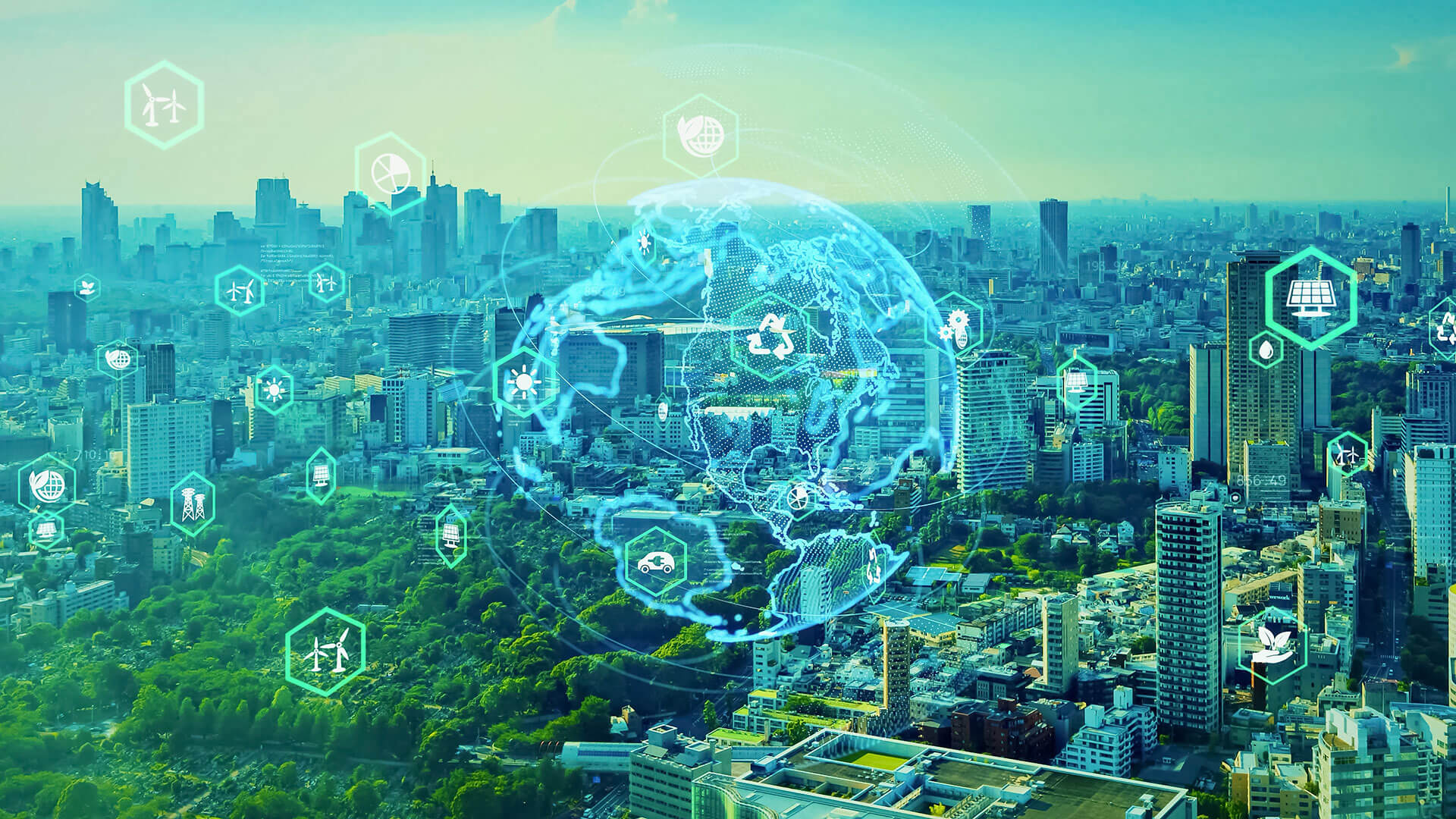As concerns continue to grow over fossil fuels’ impact on our planet, so do calls on oil and gas producers to do more to mitigate climate change and related environmental challenges. These include the Gulf Cooperation Council (GCC) countries currently engaged in national efforts to reduce reliance on hydrocarbons for economic growth. In doing so, the GCC may contribute to the global push for net zero. This is due to the region’s potential to become a renewable energy and clean fuel hub.
The effort required to make this transition successful should not be underestimated. Fossil fuels continue to power practically every sector of the GCC’s economies, making them a significant source of greenhouse gas emissions. As things stand, hydrocarbons account for 99% of the GCC’s primary energy consumption, whereas the contribution of renewables to regional energy needs is a work in progress. The GCC has nevertheless spent the past decade trying to bridge this gap by initiating efforts to develop renewable energy while meeting its commitments to the Paris Agreement.
The GCC’s opportunity
Boasting some of the highest sunlight levels in the world, GCC countries have invested heavily in solar power capabilities in recent years. Solar energy is an essential feature of Qatar’s National Environmental and Climate Change Strategy, which aims to reduce greenhouse gas emissions by 25% and increase non-gas power generation by 20% by 2030. To support this, the Al-Kharsaah Solar Power Plant came online in October 2022 and currently has a maximum capacity of 800 megawatts (MW). Building on the mass deployment of electric buses during FIFA World Cup 2022, Kahramaa (Qatar’s general electricity and water corporation) plans to install up to 1000 EV charging stations by the end of the decade to promote green transportation.
Despite having less robust wind resources than Europe and other parts of the world have, there are still significant opportunities for GCC countries to expand on- and offshore wind capabilities. There is no existing commercial wind power plant in Qatar, although there are examples nearby from which to draw inspiration. These include Kuwait’s Sagaya Wind Power Plant (capable of generating 10 MW), Oman’s Harweel Wind Power Plant (50 MW) and Saudi Arabia’s Dumat Al Jandal (400 MW).
In addition to solar and wind, GCC countries have the potential to develop other renewable sources, such as biomass. This is where food, agriculture and municipal waste can be utilized for energy generation. The world’s largest waste-to-energy power plant is currently being constructed in the United Arab Emirates (UAE), where approximately 1.9 million tons of waste will eventually produce 215 megawatt-hours per year. Moreover, surplus wastewater generated by desalination and chemical industry plants could also be used to generate clean energy via membrane-based reverse electrodialysis or pressure retarded osmosis-type advanced technologies.
Yet, despite progress made by the GCC to better harness the region’s renewable energy potential, there is still work to be done. Including additional research and development to support scaling up of technologies. Clean fuels such as hydrogen may be one way to fill the gap between capability and supply. Already being produced by Oman, Saudi Arabia and the UAE for exportation, hydrogen could significantly fuel the region’s energy exports and its transportation, manufacturing and power sectors.
Roadblocks to sustainability
Using natural gas in production, however, raises concerns about hydrogen’s contribution to CO2 emissions. Most hydrogen produced in the world today is gray hydrogen, which is made in processes employing fossil fuels without carbon capture. Blue hydrogen, which differs in that it employs carbon capture technology, would be preferable in terms of emissions.
Ammonia is another promising option for power generation in fuel cells, transportation and cooling systems. Consisting of hydrogen and nitrogen molecules, there are no direct carbon emissions when ammonia is either burned or consumed. It also has better storage characteristics than hydrogen, allowing for easier handling. Qatar has already announced plans for the world’s largest facility for producing blue ammonia, which is ammonia made using blue hydrogen. The plant could produce up to 1.2 million tons annually. Blue ammonia could serve as an alternative to liquified natural gas exports, further increasing the sustainability of Qatar’s economy.
It should be noted that, as it derives from blue hydrogen, the production of blue ammonia requires natural gas as an input, making it only a transitional step towards net-zero targets. “Pure” renewable energy derived from sea, solar and wind may eventually be used to produce truly green hydrogen and ammonia, making the complete supply chain as sustainable as possible. This will nevertheless take time, research and development.
Other obstacles prevent GCC countries from rapidly adopting hydrogen- and ammonia-type energy carriers. The absence of a competitive price for production, especially from renewable sources, is particularly problematic due to the lack of appropriate facilities. Necessary infrastructure, such as hydrogen filling stations and pipelines, remains under construction. The technologies required to overcome such problems are readily available; it’s now up to the GCC to put them to use. Doing so offers several clean transition pathways that can positively impact regional efforts to tackle climate change, increase overall sustainability and improve decarbonization strategies.
[Lane Gibson edited this piece.]
The views expressed in this article are the author’s own and do not necessarily reflect Fair Observer’s editorial policy.
Support Fair Observer
We rely on your support for our independence, diversity and quality.
For more than 10 years, Fair Observer has been free, fair and independent. No billionaire owns us, no advertisers control us. We are a reader-supported nonprofit. Unlike many other publications, we keep our content free for readers regardless of where they live or whether they can afford to pay. We have no paywalls and no ads.
In the post-truth era of fake news, echo chambers and filter bubbles, we publish a plurality of perspectives from around the world. Anyone can publish with us, but everyone goes through a rigorous editorial process. So, you get fact-checked, well-reasoned content instead of noise.
We publish 2,500+ voices from 90+ countries. We also conduct education and training programs
on subjects ranging from digital media and journalism to writing and critical thinking. This
doesn’t come cheap. Servers, editors, trainers and web developers cost
money.
Please consider supporting us on a regular basis as a recurring donor or a
sustaining member.
Will you support FO’s journalism?
We rely on your support for our independence, diversity and quality.







Comment